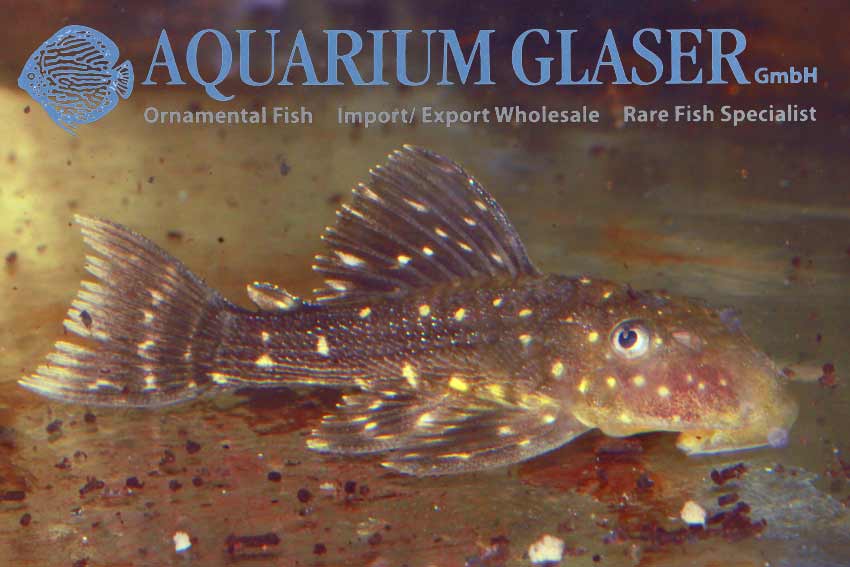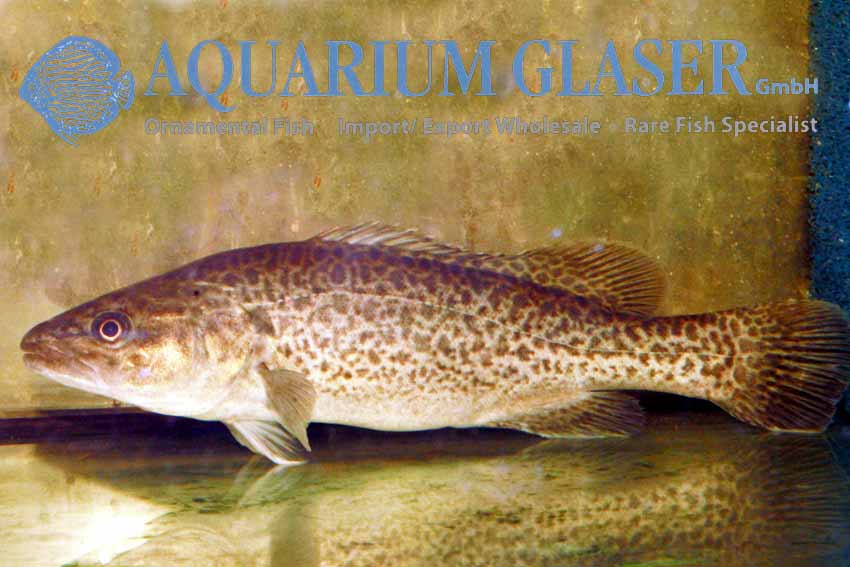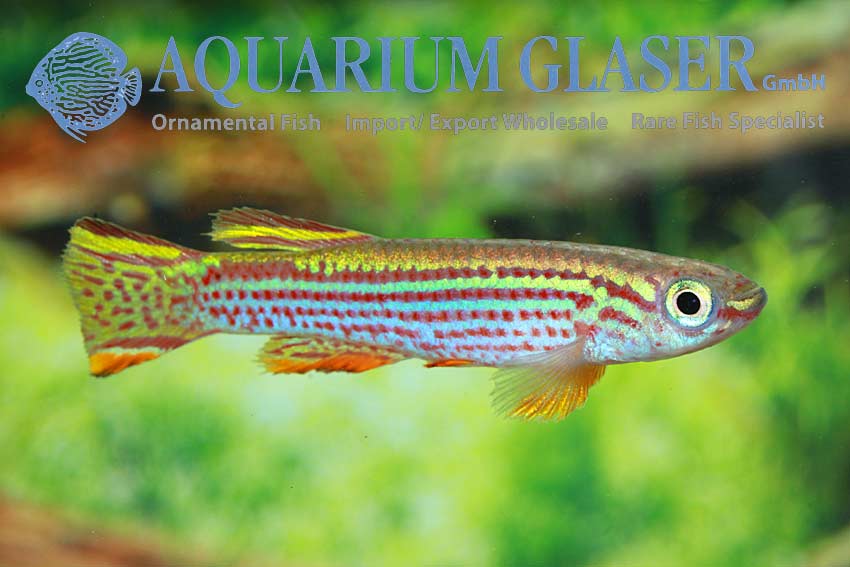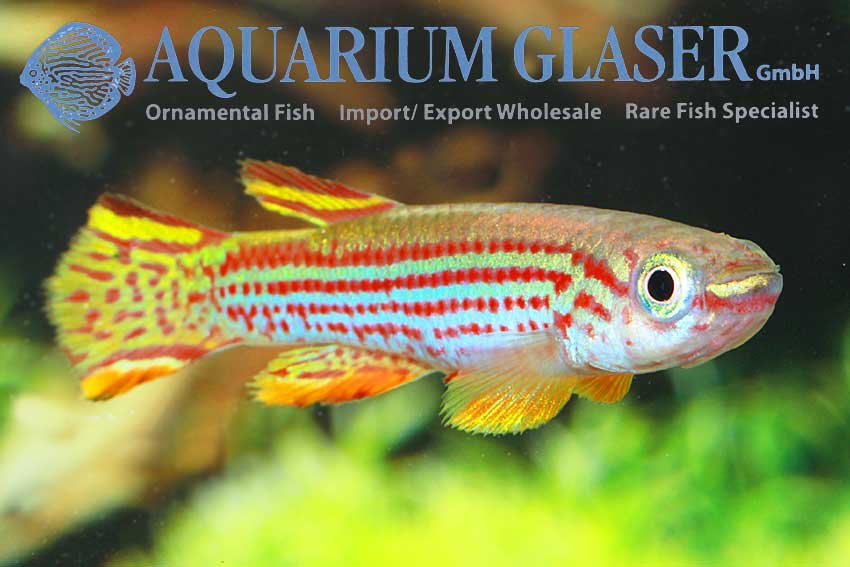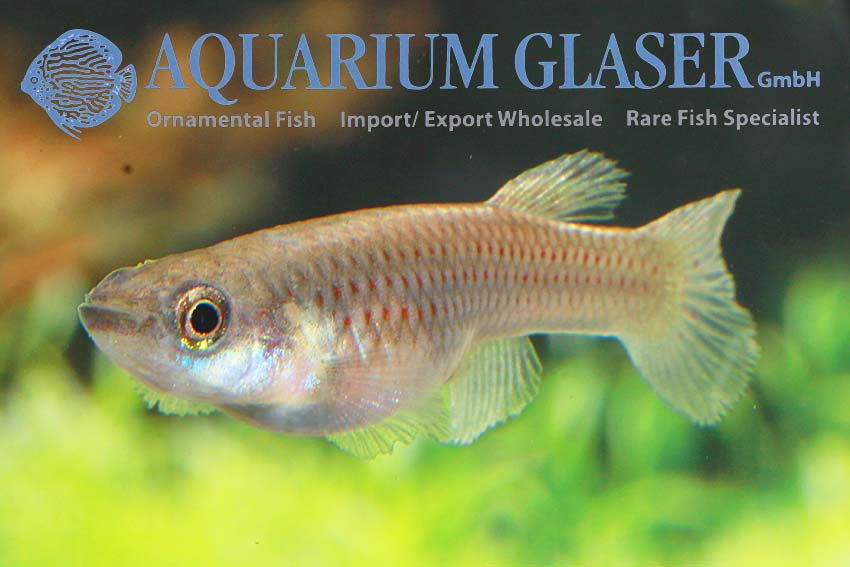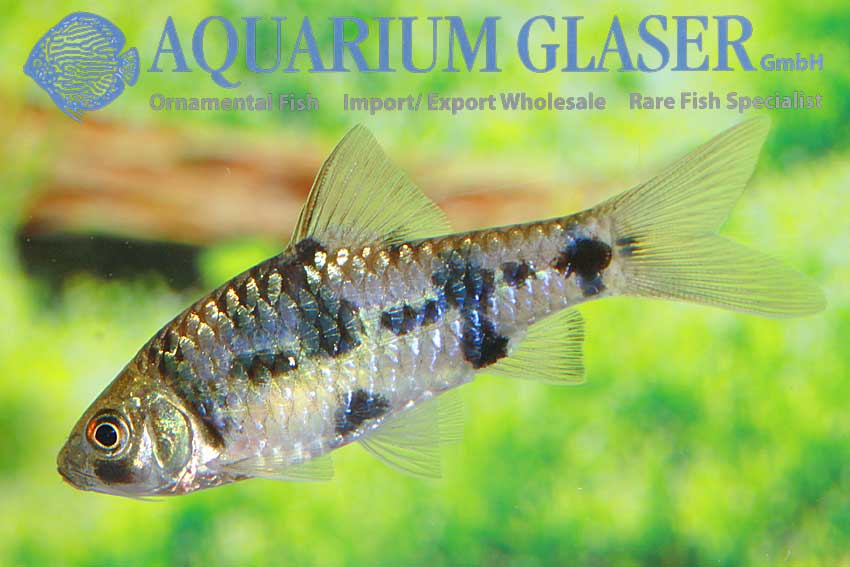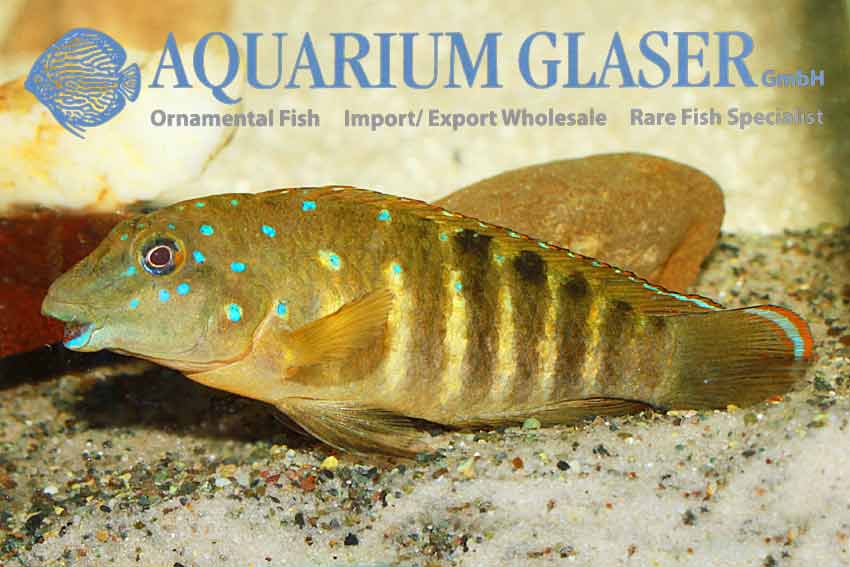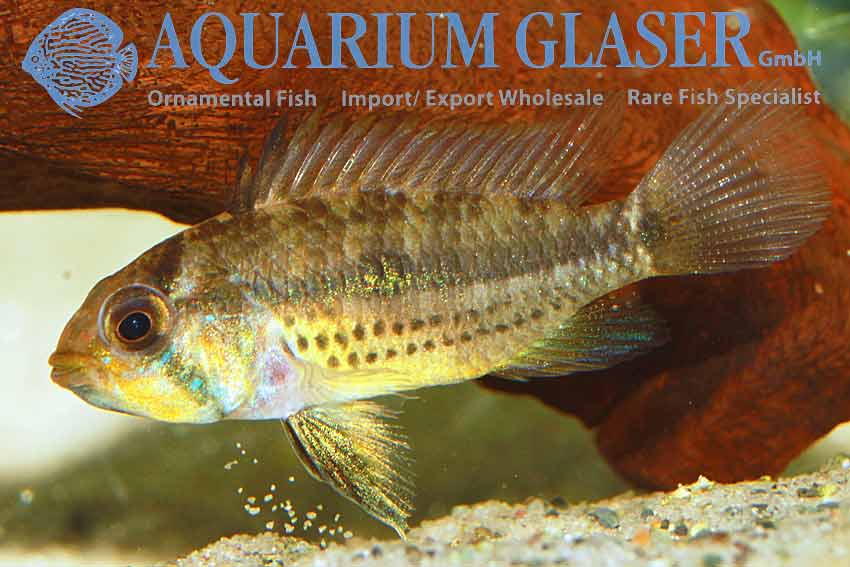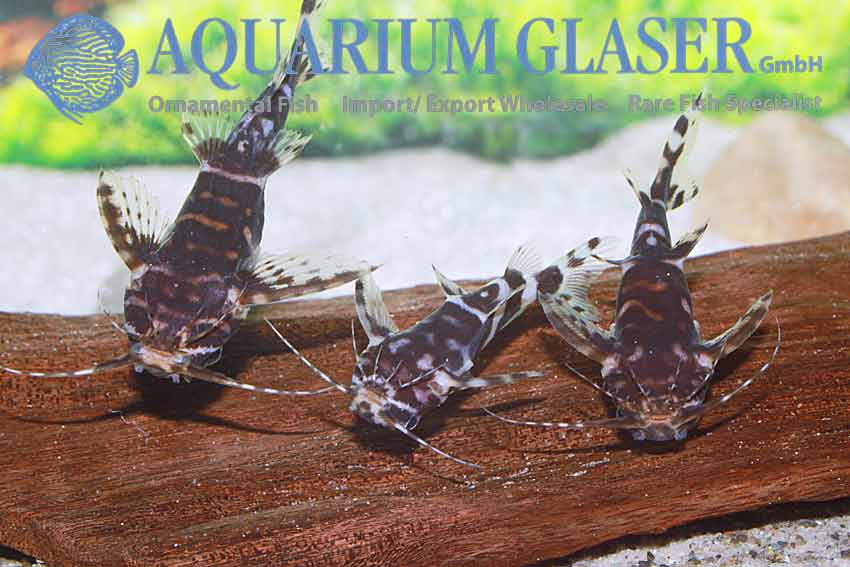



We do not have only one of the smallest species of spiny eel in stock, eg M. taeniagaster, but also one of the largest: Mastacembelus erythrotaenia. These splendid guys reach us from Indonesia and are real personalities for the owners of large tanks. The largest known specimen was about 1 m long. Currently we have small (8-10 cm), medium sized (20-25 cm) and large (40-45 cm) specimens in stock.
Spiny eels are very calm aquarium inhabitants. They also become very tame. One can train them easily, for example on sounds like a whistle. Once they are trained the large fish come along and pick up food from the tip of a forceps. One can feed the also with bare fingers, but the spiny eels are not always very unerring…
Regarding the water conditions these spiny eels are not very demanding. The water temperature should be between 24-28°C. Such large fish are fed best with frozen food like smelt and shrimps. They also like earthworms very much. Plants and other tankmates are generally not harmed. However, small fish are taken as food.
For our customers: the fish have code 426501 (8-10 cm), 426505 (20-25 cm), and 426509 (40-45 cm) on our stocklist. Please note that we exclusively supply the wholesale trade.
Lexicon: Mastacembelus: is said to be derived from ancient Greek and should means “the one that throws oneself biting”. erythrotaenia: ancient Greek, means “with red bands”.
Text & photos: Frank Schäfer
| Angaben zum Tier | |
|---|---|
| Herkunft | Indonesien / Indonesia |
| Verfügbare Größe in cm | 8 - 45 |


















































 This is another, very nice dwarf cichlid from western Africa, available even with the name of the collecting site. We have fully grown and wonderful coloured specimens in stock.
This is another, very nice dwarf cichlid from western Africa, available even with the name of the collecting site. We have fully grown and wonderful coloured specimens in stock.



 This dwarf tetra (maximum length reported is 4 cm) is a real jewel from Westafrica. The fish love to swim. They should be kept in schools in a well planted aquarium. It is important to choose a dark gravel which makes the colours of the fish shine brightly.
This dwarf tetra (maximum length reported is 4 cm) is a real jewel from Westafrica. The fish love to swim. They should be kept in schools in a well planted aquarium. It is important to choose a dark gravel which makes the colours of the fish shine brightly.
 This beautiful sport of P. humilis is available only very occassionally. We received them in an ideal size (5-8 cm). They have already very nice colours!
This beautiful sport of P. humilis is available only very occassionally. We received them in an ideal size (5-8 cm). They have already very nice colours!






































